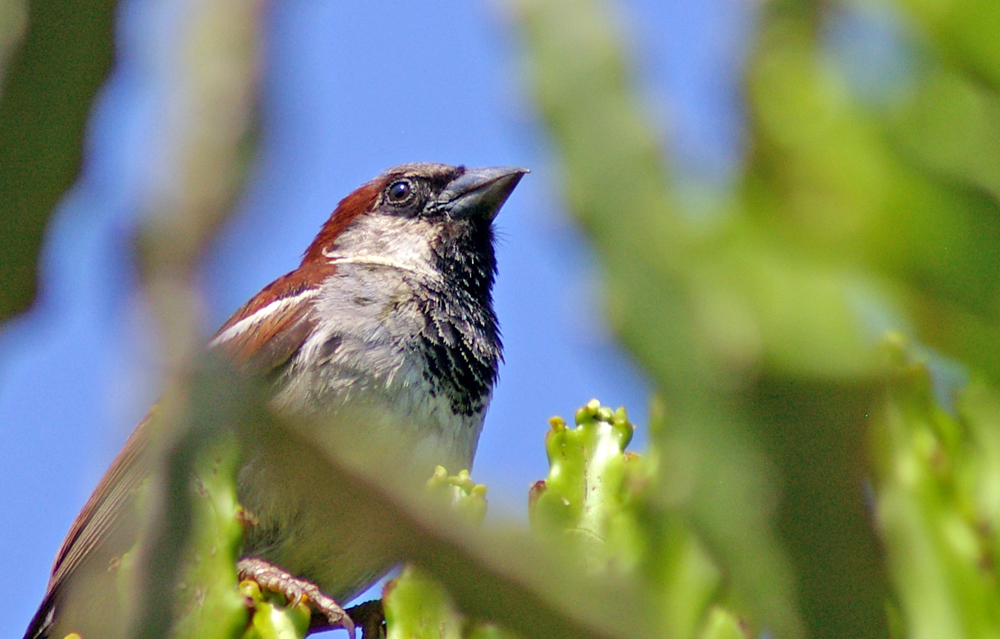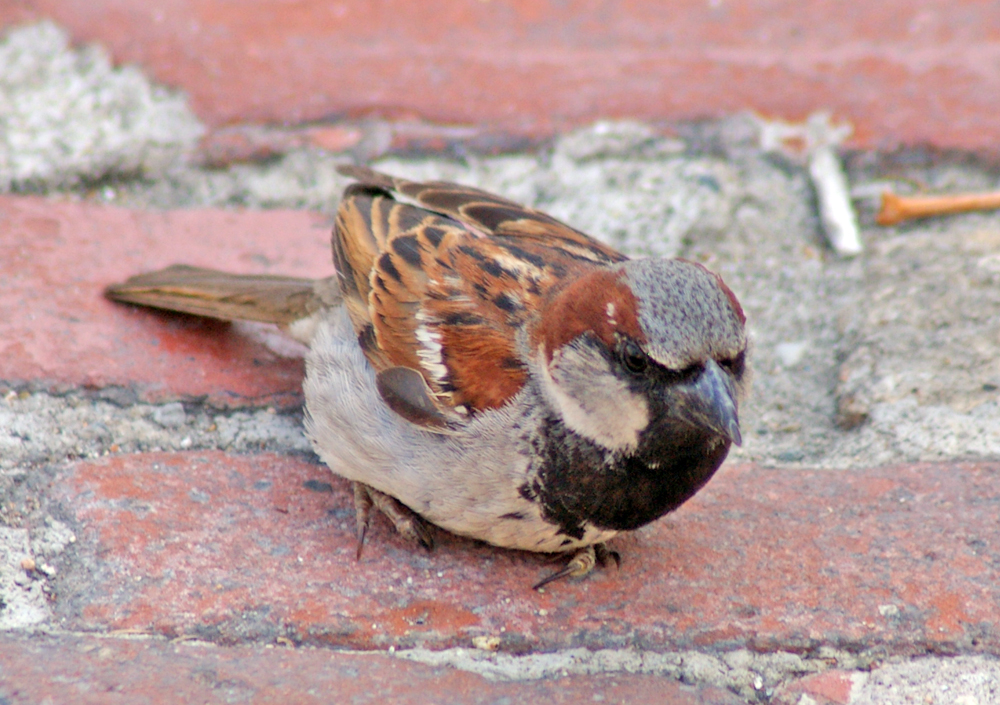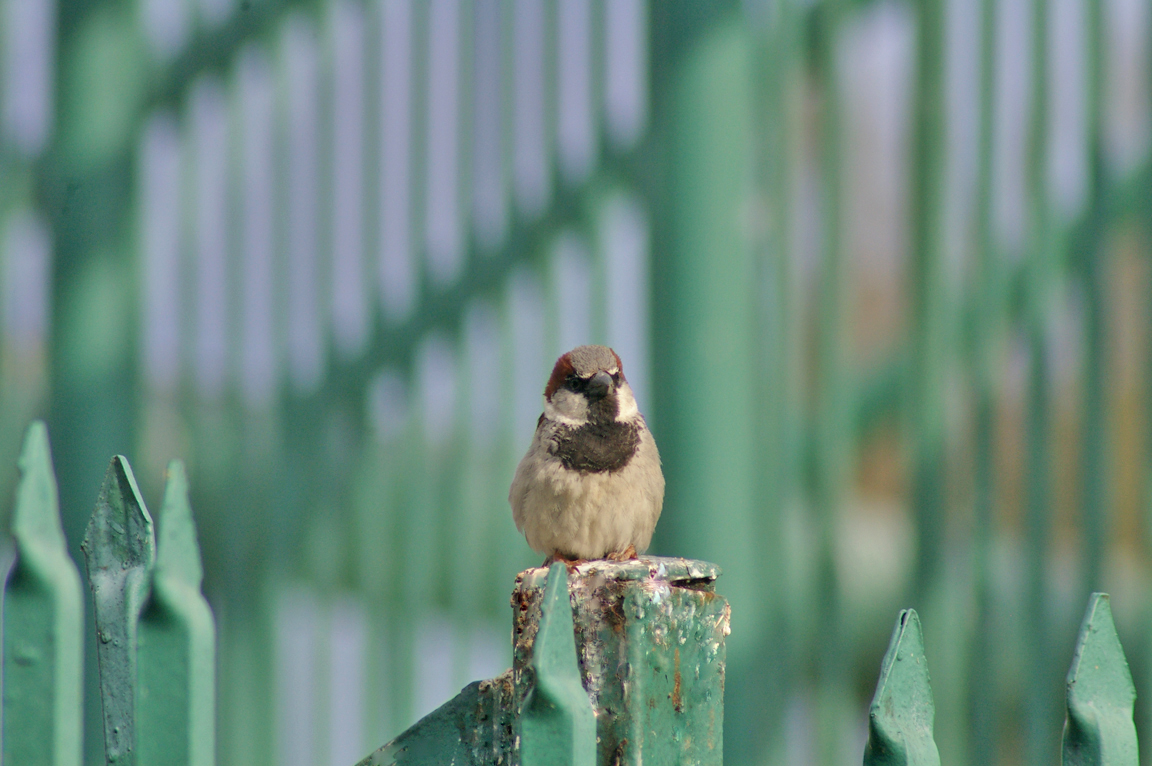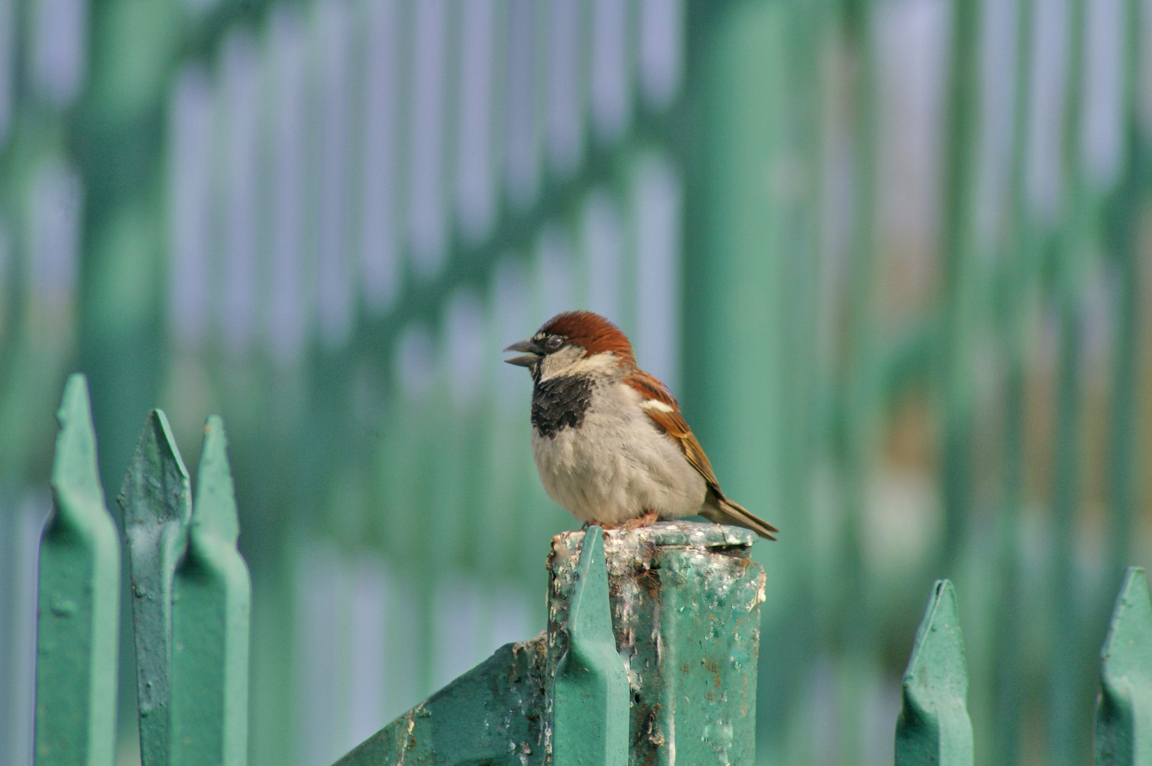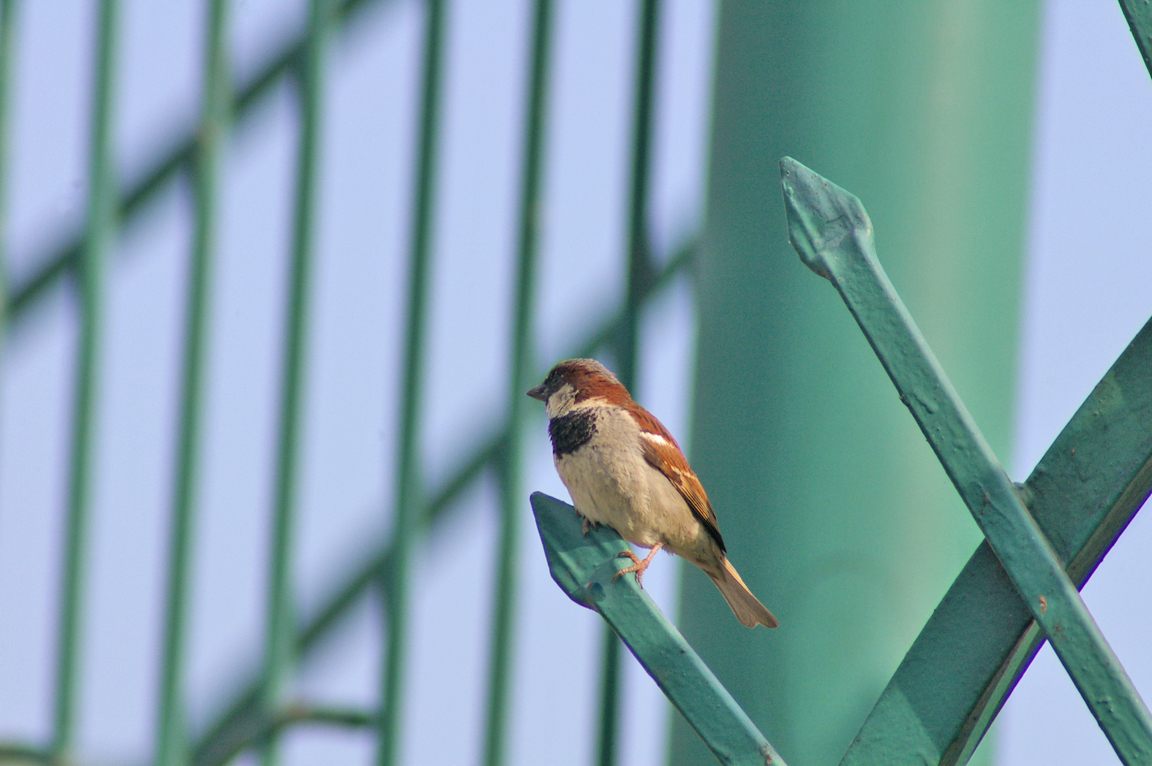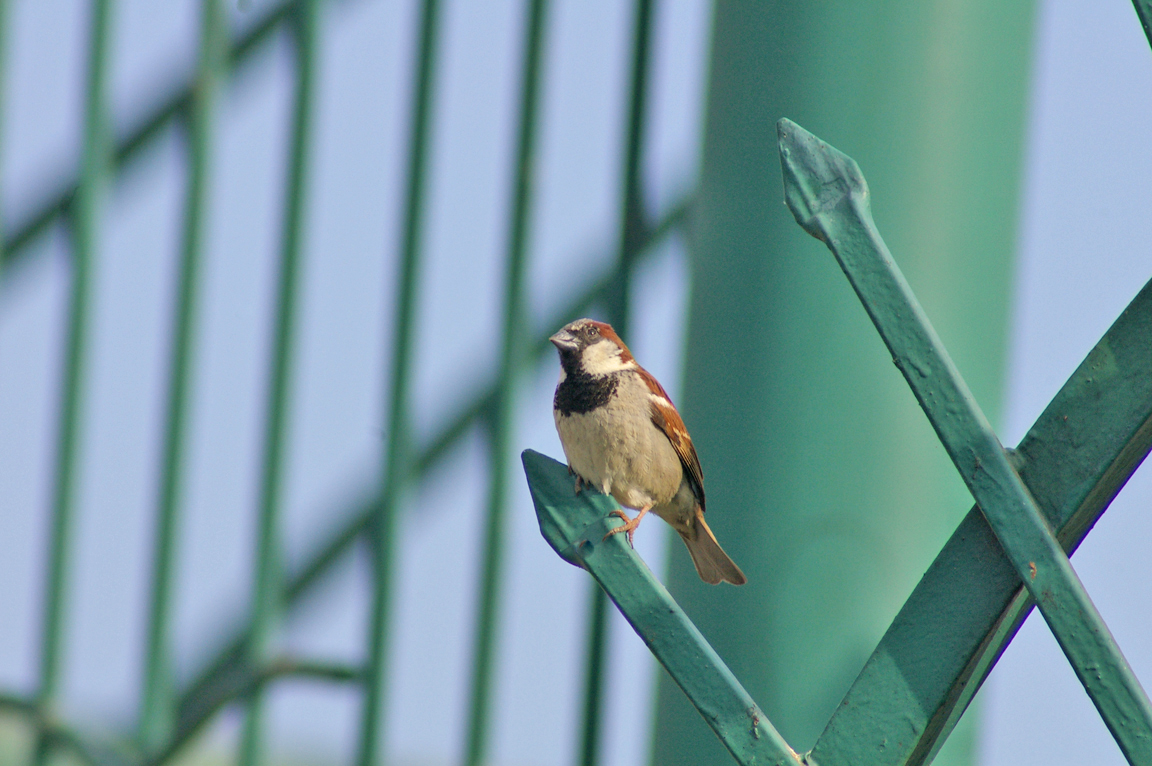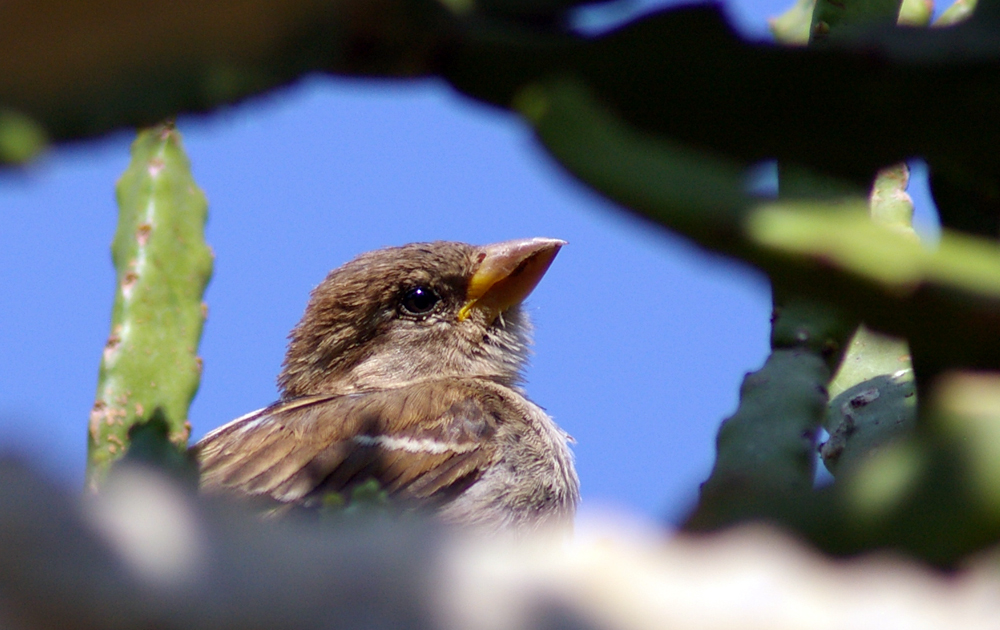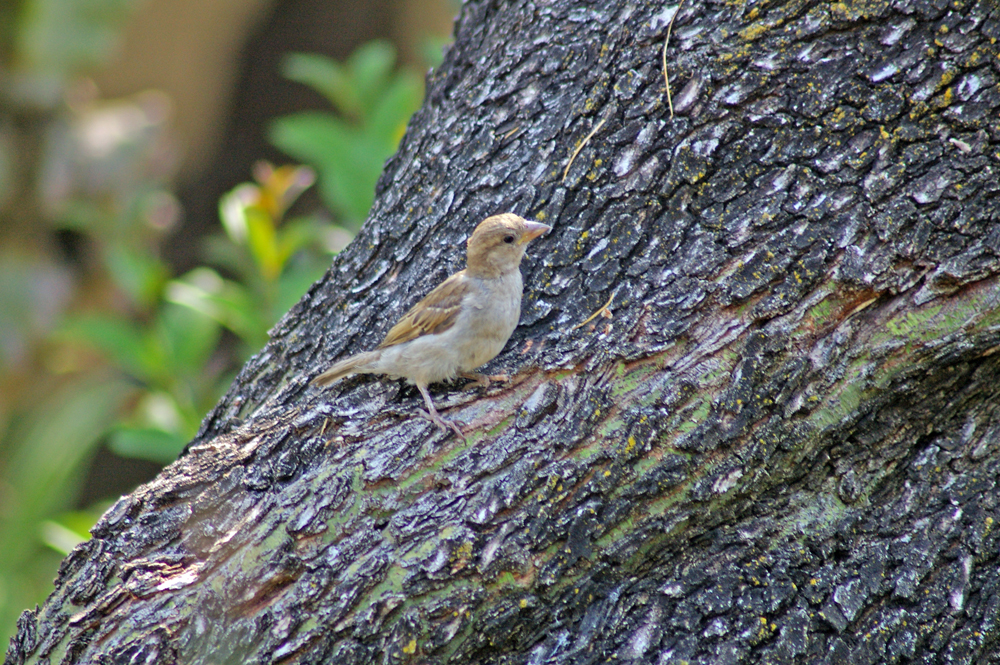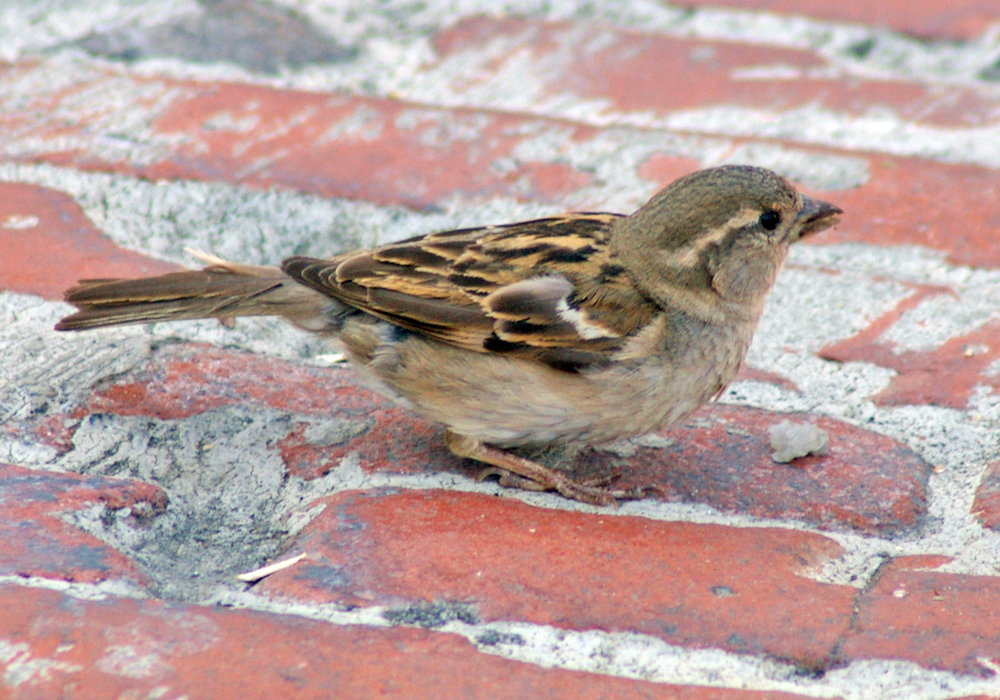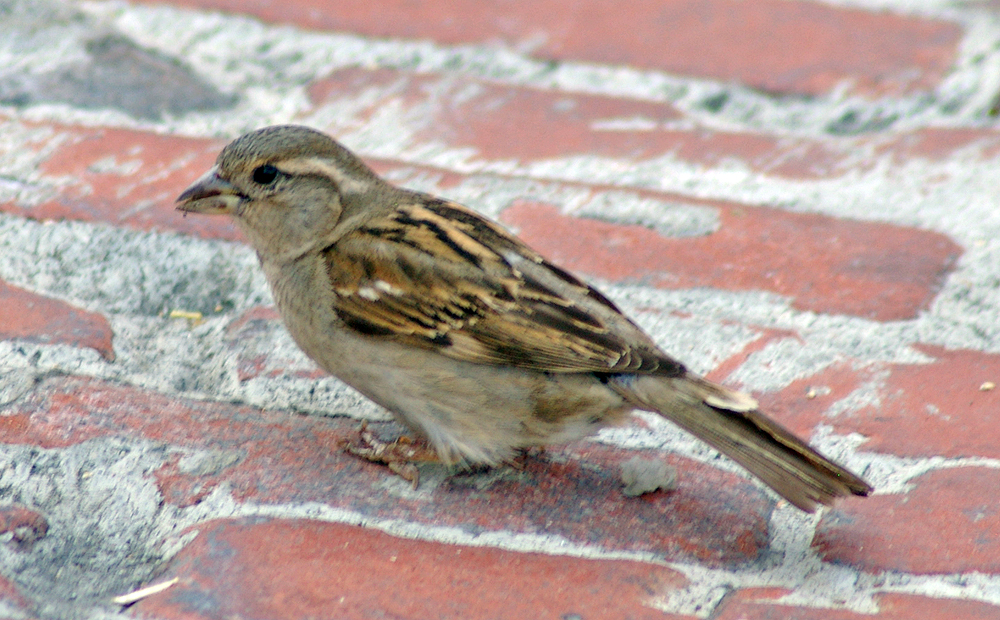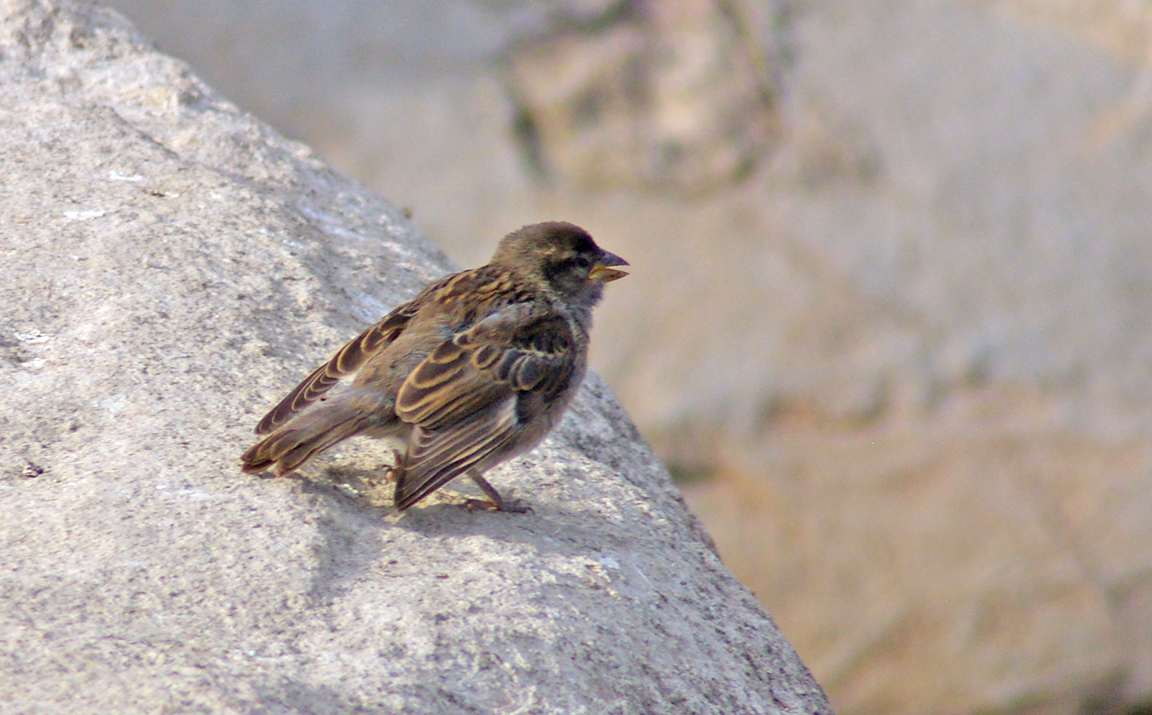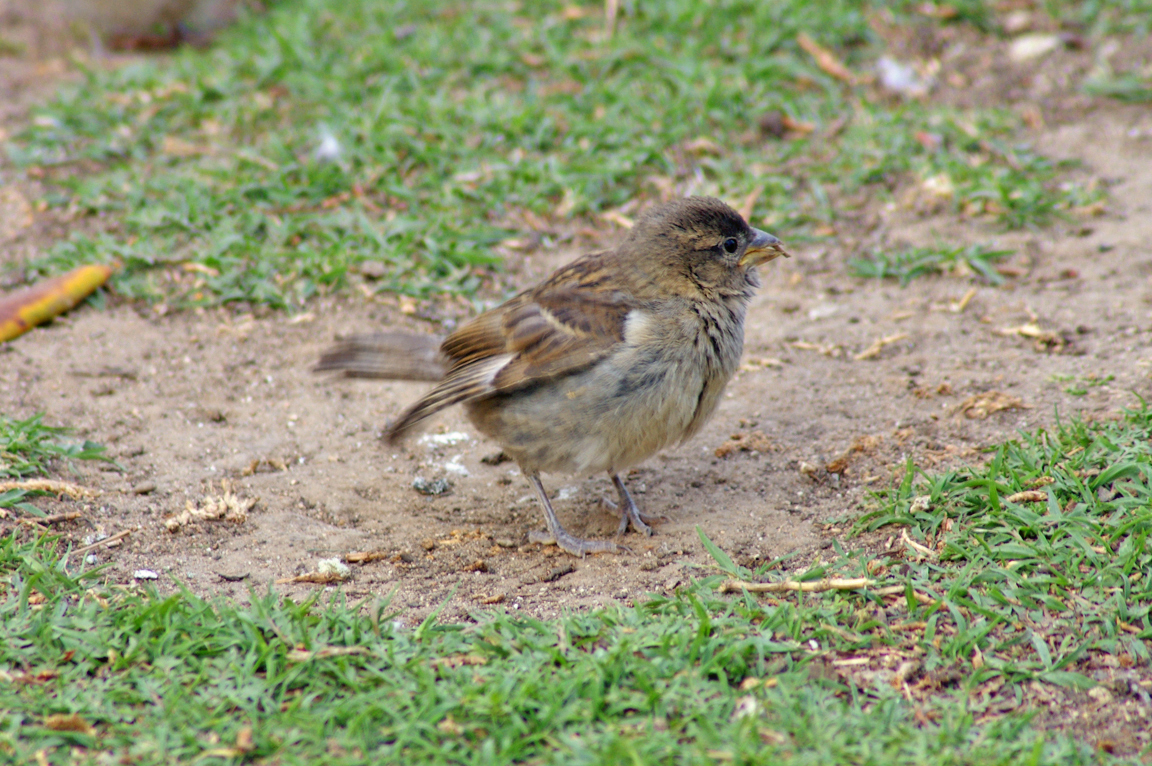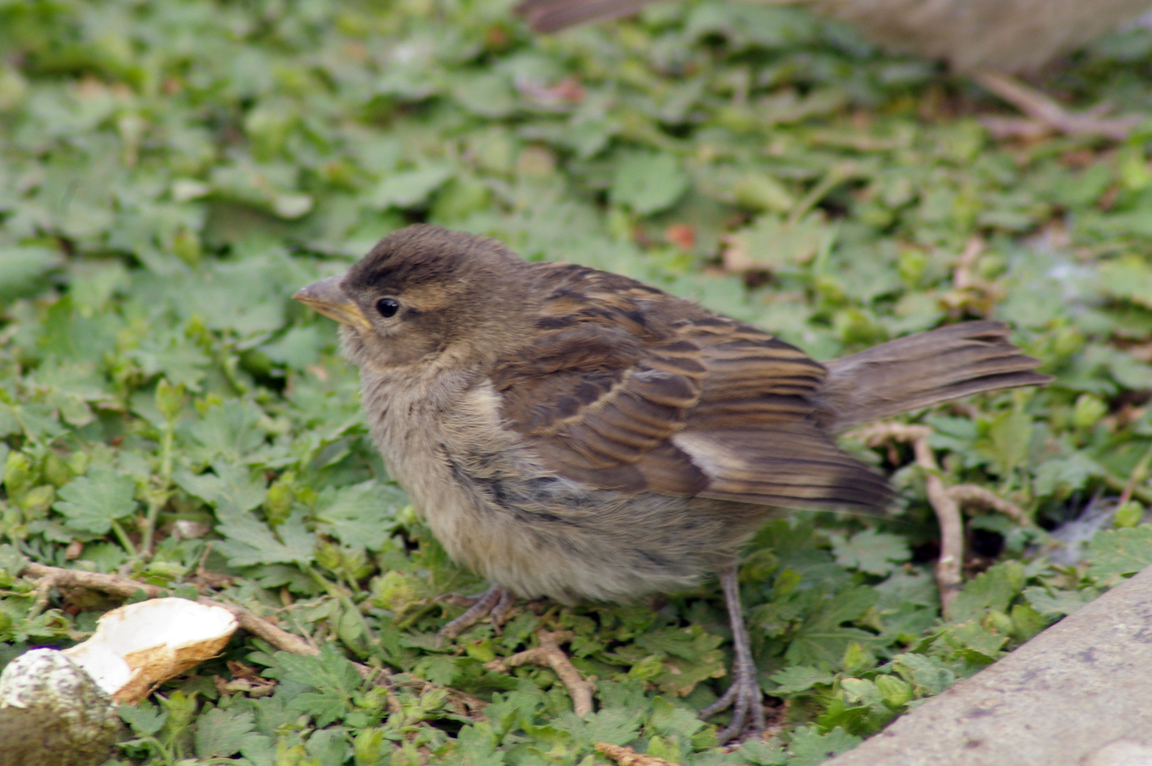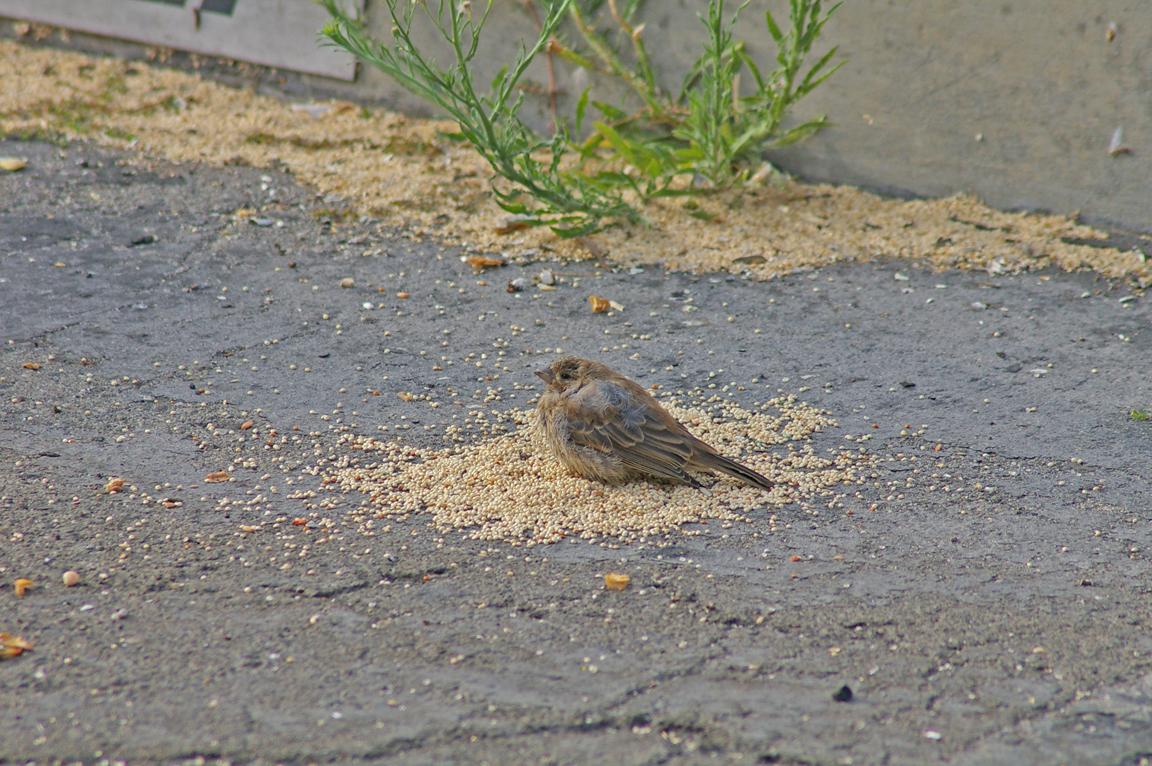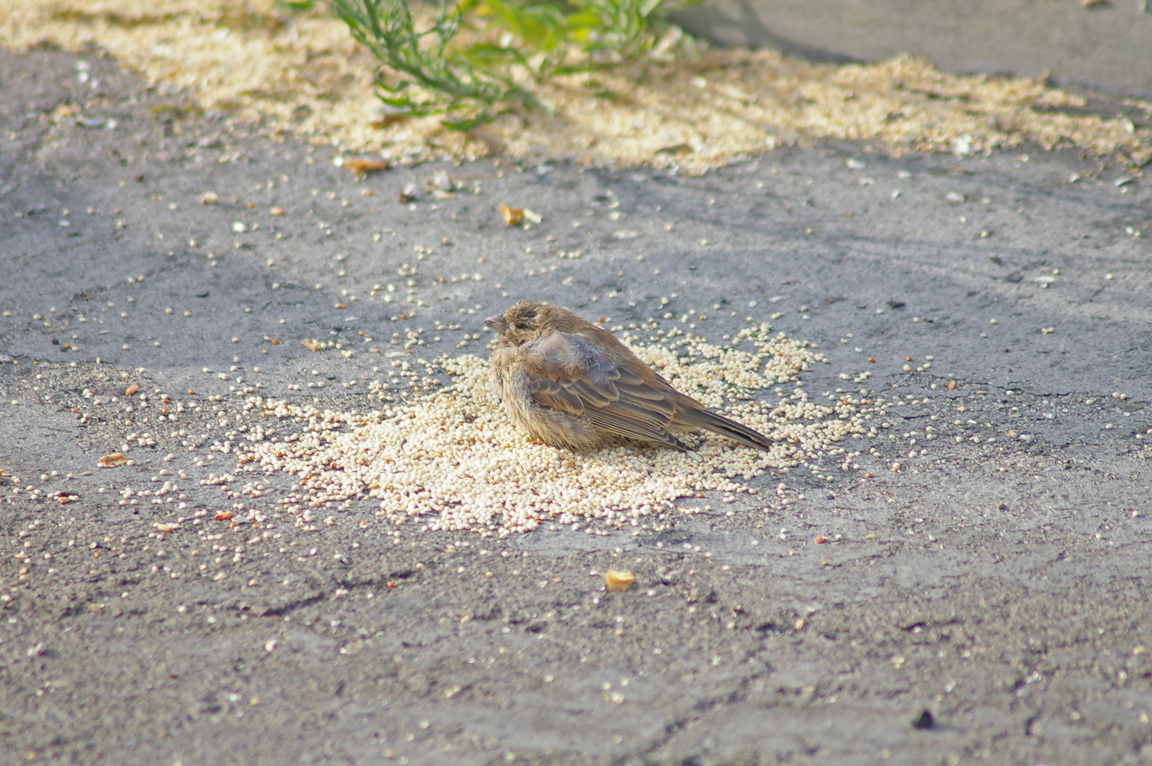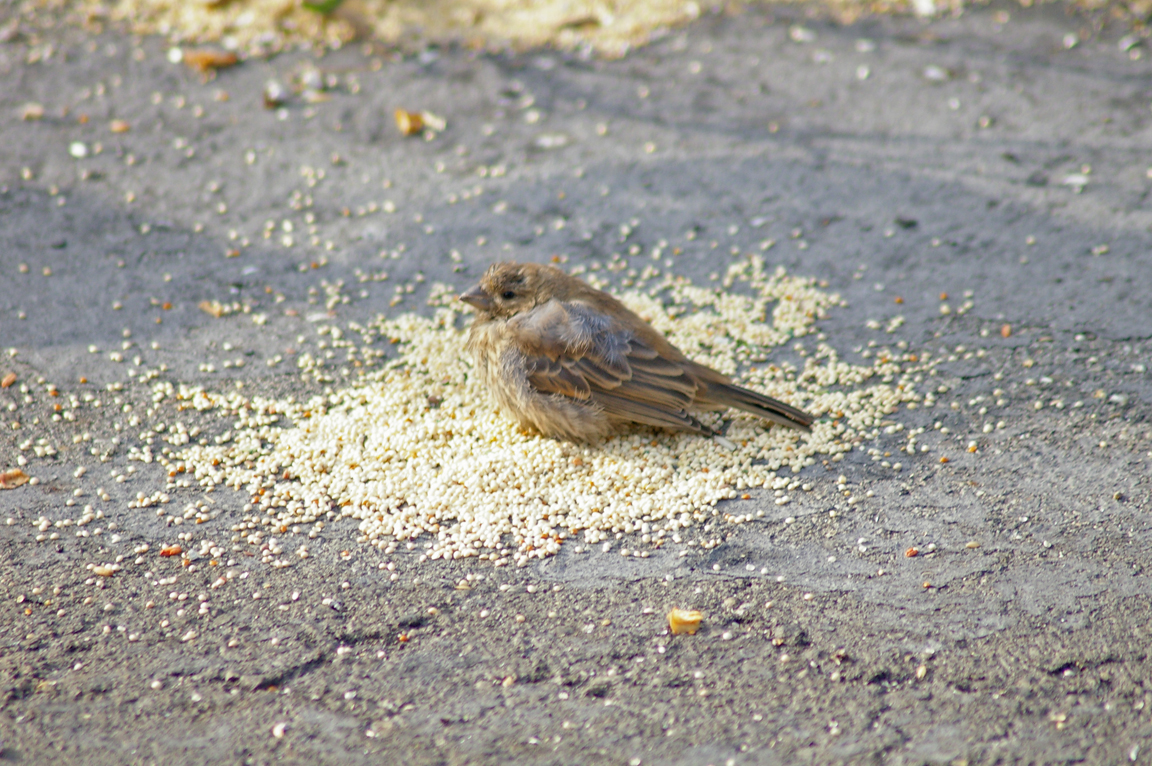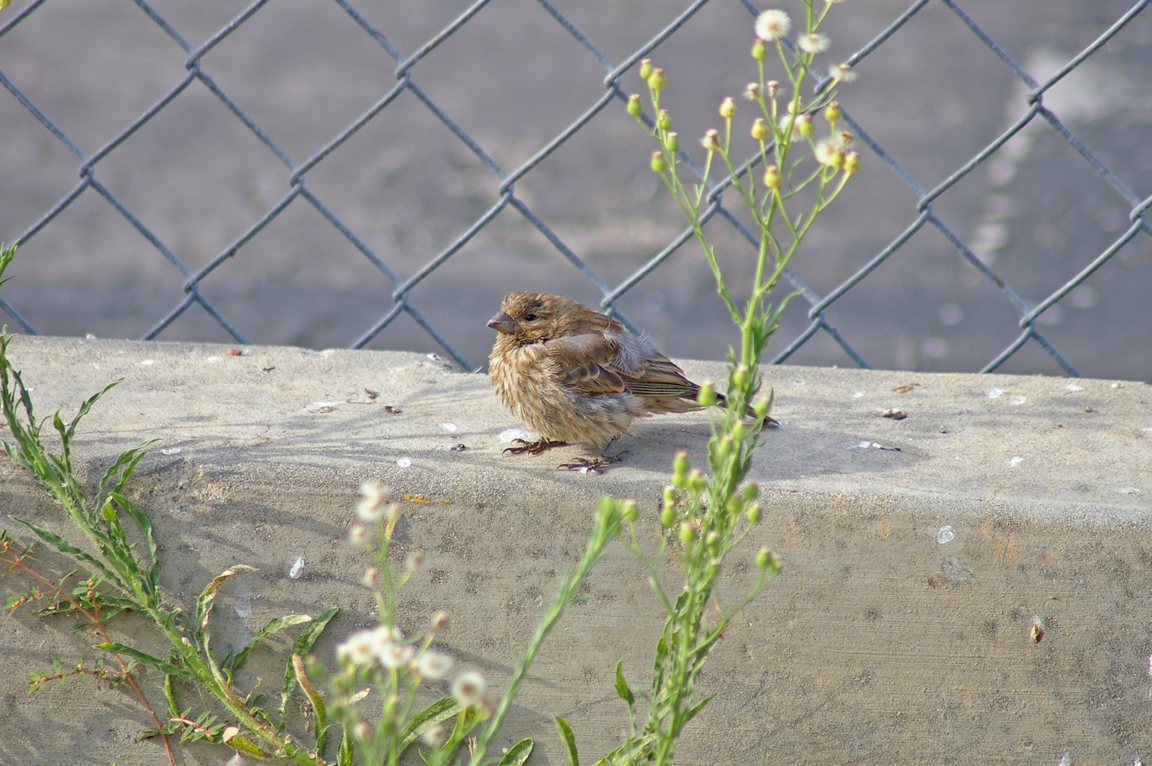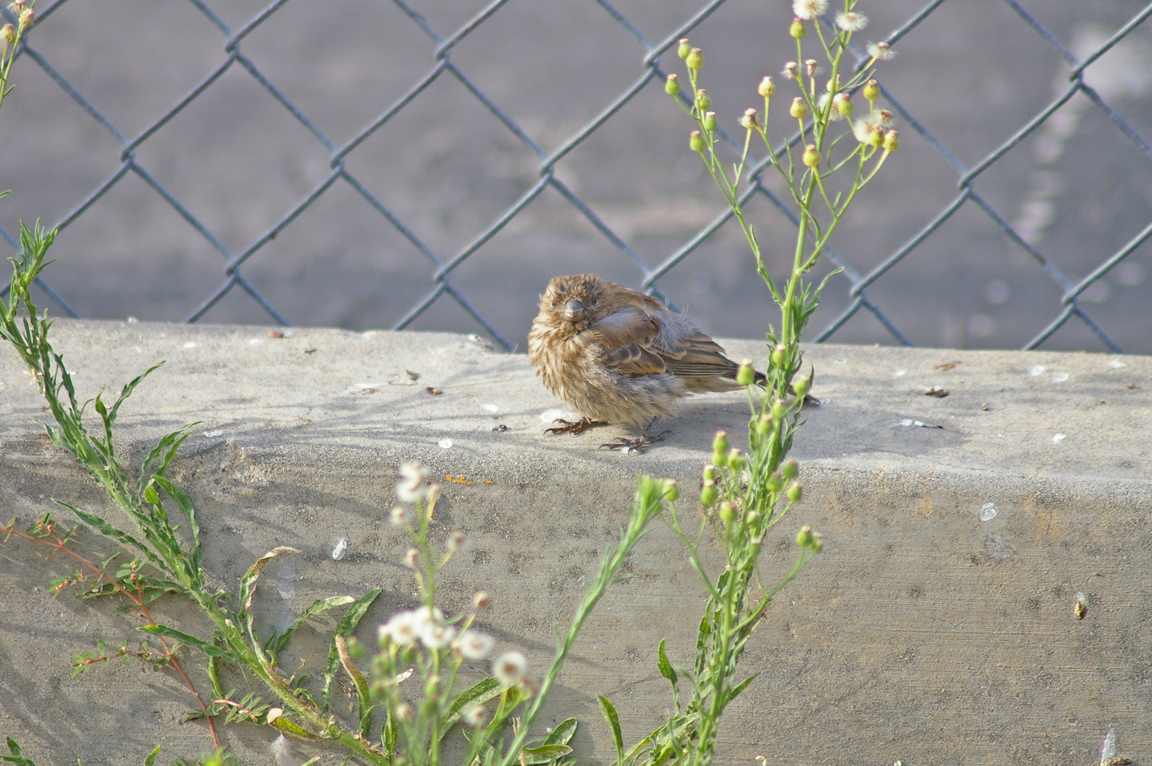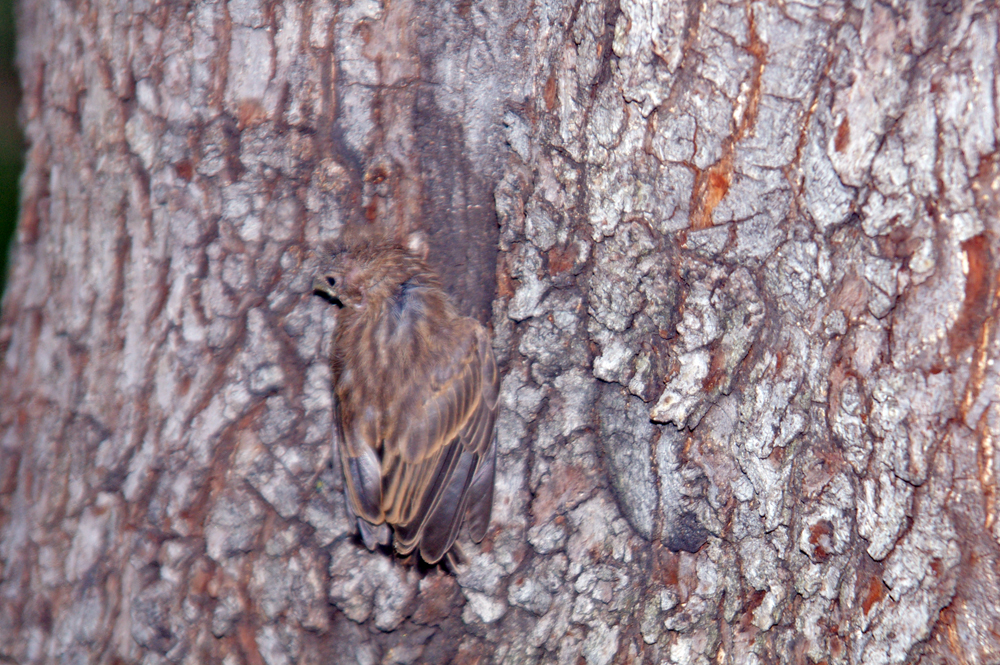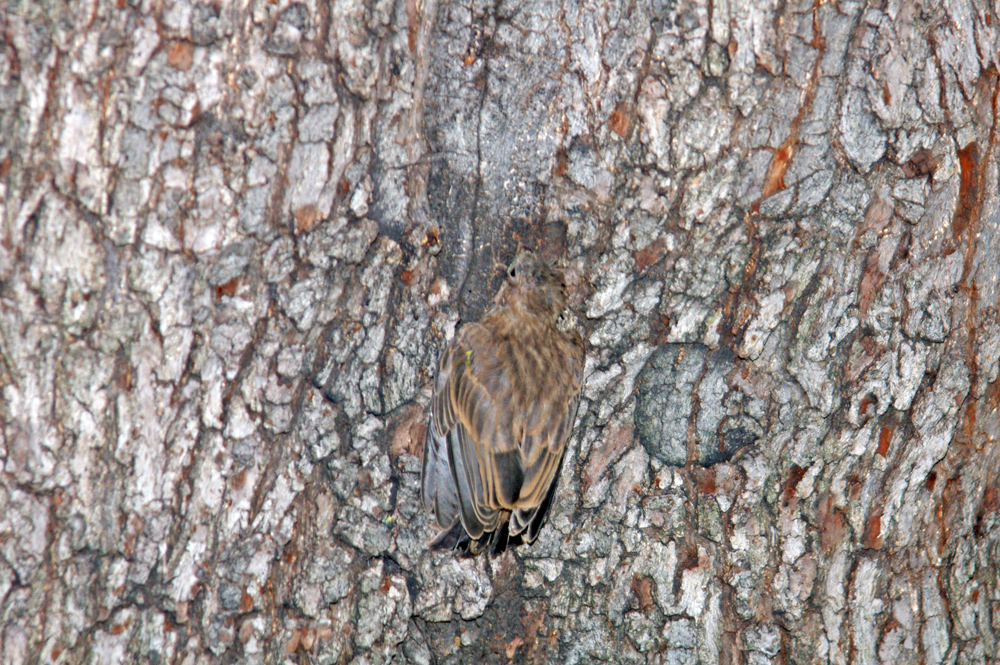|
|
|
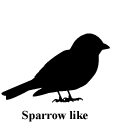 |
House Sparrow
|
| Passer domesticus | |
The Sparrow to many, the House Sparrow was introduced into North America from its native Europe in the 1850s. It successfully spread across the continent, and is abundant in urban and agricultural habitats. Although it is found in many remote places, it nearly always stays near people and their buildings.
Interesting Information
-
The House Sparrow was introduced into Brooklyn, New York, in 1851. By 1900 it had spread to the Rocky Mountains. Its spread throughout the West was aided by additional introductions in San Francisco, California, and Salt Lake City, Utah.
-
The House Sparrow has been present in North America long enough for evolution to have influenced their morphology. Populations in the north are larger than those in the south, as is generally true for native species (a relationship known as Bergman's Rule).
-
Although not a water bird, the House Sparrow can swim if it needs to, such as to escape a predator. Sparrows caught in a trap over a water dish tried to escape by diving into the water and swimming underwater from one part of the trap to another.
-
The House Sparrow is a frequent dust bather. It throws soil and dust over its body feathers, just as if it were bathing with water.
Description
Adult Description
-
Size: 14-16 cm (6-6 in)
-
Wingspan: 19-25 cm (7-10 in)
-
Weight: 26-32 g (0.92-1.13 ounces)
-
Small, stocky songbird.
-
Bill thick.
-
Legs short.
-
Chest unstreaked.
-
Wingbars.
-
Male with black throat and white cheeks.
-
Back brown with black streaking.
Sex Differences
Male with reddish back and black bib, female brown with eyestripe.
Male
White cheeks. Black throat and chest. Back of head chestnut, extending to eye. Gray cap. Bill black. Broad, white upper wingbar. Back feathers edged with chestnut. Underparts whitish gray. In winter, the black bib is hidden by pale tips to the breast feathers that eventually wear off and reveal the black.
Female
Dingy brown all over. Unstriped gray brown chest and underparts. Large pale yellowish eyestripe. Black and straw-colored stripes on back. Bill yellowish. Eyes black. Crown plain gray brown.
Immature
Juvenile similar to adult female.
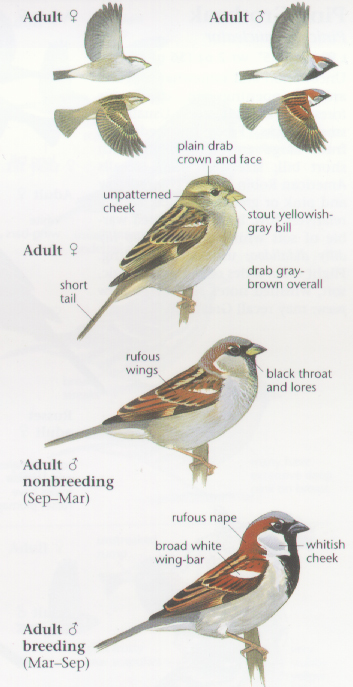
Photo taken from: The Sibley Field Guide by David Allen Sibley
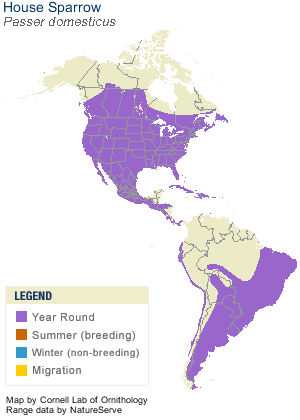
© 2003 Cornell Lab of Ornithology
|
Habitat |
|
Found in human modified habitats: farms, residential, and urban areas. |
|
Behavior |
|
Forages primarily on ground. |
|
Food |
|
Seeds, especially waste grain and livestock feed. Also weed seeds and insects. |
Taxonomy
| Kingdom: | Animalia |
| Phylum: | Chordata |
| Subphylum: | Vertebrata |
| Class: | Aves |
| Order: | Passeriformes |
| Family: | Passeridae |
| Genus: | Passer |
| Species: | Passer domesticus |
| Subspecies: | Passer domesticus domesticus |
Similar Species |
|
|
Bird Sound |
|
Calls a slightly metallic "cheep, chirrup." Song a series of cheeps. |
|
Eggs look like this |
|
Photo taken from: ARCTOS Collaborative Collection Management Solution |
Videos
House Sparrows
Dust Bath
House Sparrows
Doing Battle
